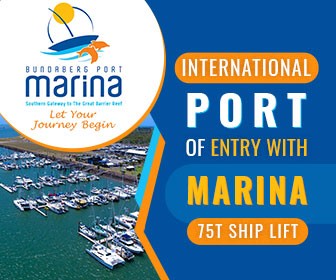New Australian biofouling protocol for arriving yachts
Published 20 years ago, updated 6 years ago
The Australian Quarantine and Inspection Service (AQIS) is introducing biofouling management requirements for arriving international yachts (among other vessels).
The first component will be a voluntary phase-in period commencing on 1 Oct 2005. During the voluntary period AQIS will trial water line inspections, gather information about current maintenance practices and educate yacht operators about biofouling and the impact it can have on vessels and the environment.
At least 250 introduced marine species are already established in Australian ports and waters – and a staggering 70 per cent of these arrived as biofouling organisms on vessels’ hulls.
The Australian Quarantine and Inspection Service (AQIS) has developed a system to regulate biofouling on internationally plying vessels. After considerable consultation, that system will come into force on 1 October 2005, when AQIS will begin inspecting the hulls of all vessels when they arrive at the first port of call in Australia. Vessels with visibly fouled hulls may be subjected to closer inspection and that may involve removing such vessels from the water.
Yachts which arrive with a clean hull will not face the costs of slipping the vessel.
The new system will be phased in over 12 months. The first stage will consist of voluntary guidelines and data gathering. Initially, the new system will apply only to internationally plying vessels less than 25 m in length and foreign vessels (of any size) that are apprehended for illegal activities or rescued by Australian authorities inside territorial waters.
If you’re the operator of an internationally plying vessel less than 25 m in length and you intend to visit Australia, you need to learn about the new protocol. Full details about the protocol and how it will work may be found on the AQIS website: http://www.aqis.gov.au/yachts [BROKEN LINK]
On the site you’ll be able to find the following:
- Biofouling fact sheet (outlining the biofouling protocol);
- A comprehensive information document (detailing the background to the protocol and maintenance guidelines for yacht);
- A biofouling maintenance log book (to assist yacht operators record any biofouling maintenance work performed).
Related to following destinations: Australia







